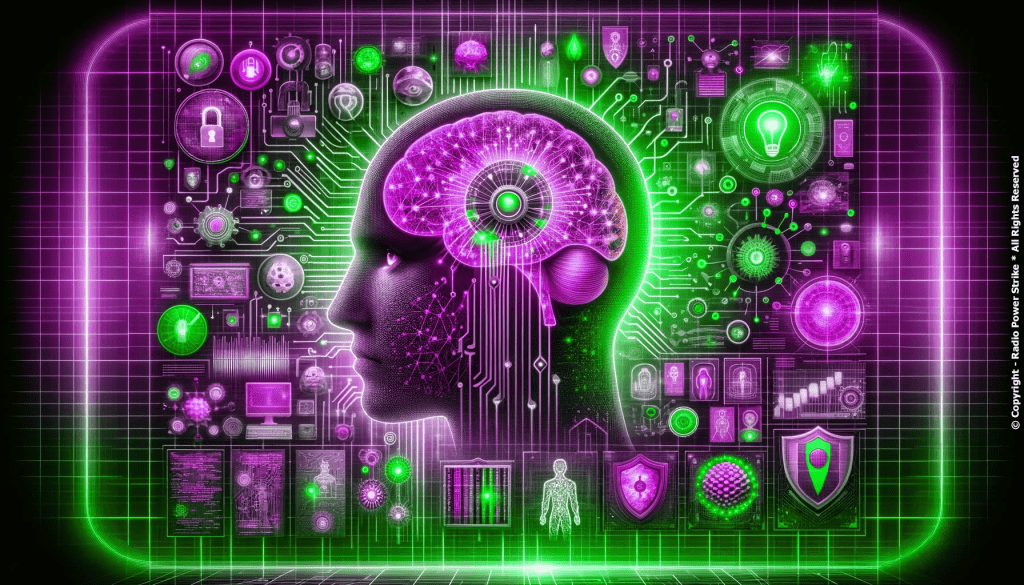The Human Firewall: Strengthening Cyber Security Awareness
Empowering Individuals as the First Line of Digital Defense

Amidst the ever-evolving landscape of cyber threats, the term “firewall” often conjures images of robust digital barriers and advanced algorithms. However, an equally vital component in this defense mechanism is the human element. By enhancing cyber security awareness among individuals and employees, we create a “human firewall” – an educated and vigilant first line of defense against potential breaches.
Ongoing Education: Keeping Pace with Emerging Threats

The realm of cyber threats is ever-changing, with new tactics and vulnerabilities emerging daily. This dynamic nature necessitates ongoing cyber education to keep individuals up-to-date.
For instance, global firms like Google regularly update their employees with “phishing quizzes” that test their ability to spot malicious emails. Such training ensures that the workforce can identify and report potential threats, thereby minimizing risks.
It’s not just about periodic training but ensuring the assimilation of knowledge. Incorporating real-life examples, interactive sessions, and simulations can make these educational initiatives more effective and engaging.
Role of Behavior Analysis: Understanding and Mitigating Risks

Behavioral analytics plays a pivotal role in recognizing potential vulnerabilities within an organization. By analyzing employee behavior, organizations can identify patterns that might expose them to cyber risks.
Companies such as Darktrace utilize AI-driven behavior analysis to detect anomalies in data access and usage patterns. If an employee suddenly downloads massive amounts of data or accesses sensitive information without prior history, the system raises an alert.
However, it’s essential to strike a balance. While monitoring can identify risks, it’s equally crucial to respect individual privacy and avoid creating a surveillance-centric workplace culture.
Creating a Culture of Security: Beyond the Technical Aspects

Building a secure organization goes beyond implementing advanced software; it’s about fostering a culture where security becomes second nature to every individual.
For example, Intel’s “Secure Aware” program promotes a security-centric mindset among employees. By rewarding those who identify and report potential threats, they incentivize proactive security behavior.
But rewards alone aren’t sufficient. Open channels of communication, where employees can discuss their concerns, ask questions, and share insights, are integral in cultivating a culture of mutual trust and collective responsibility.
In an era where technology dominates, it’s easy to overlook the human aspect of cyber security. However, by investing in cyber awareness initiatives, businesses not only fortify their defenses but also empower their most valuable asset – their people. Bridging the knowledge gap and nurturing a proactive security culture are instrumental in transforming every individual into an effective, vigilant part of the “human firewall”.
Glossary
Human Firewall
The concept of empowering individuals to act as a first line of defense against cyber threats through awareness and vigilance.
Phishing Quizzes
Interactive tests used by organizations like Google to educate employees on identifying malicious emails.
Behavioral Analytics
A method used to analyze employee behavior patterns to identify potential cyber security risks.
Darktrace
A company that employs AI-driven behavior analysis to detect unusual data access patterns, enhancing security measures.
“Secure Aware” Program
Intel’s initiative to foster a security-centric mindset among employees and encourage proactive security behaviors.
Cyber Awareness Initiatives
Programs and measures implemented to educate and inform individuals about cyber security best practices.
Cyber Security Culture
The collective mindset and practices within an organization that prioritize and normalize cyber security in everyday operations.
Frequently Asked Questions
How does the ‘human firewall’ enhance cyber security?
It involves educating individuals to recognize and respond to cyber threats, acting as an active defense mechanism.
What is the role of ongoing education in cyber security?
It keeps individuals updated on emerging threats and effective response strategies, adapting to the evolving cyber landscape.
Why are phishing quizzes important?
They help employees identify and report suspicious emails, reducing the risk of successful phishing attacks.
How does behavioral analytics contribute to cyber security?
It identifies abnormal behavior patterns that may indicate security risks, allowing for early intervention.
What is the significance of creating a security culture in organizations?
It ensures that security practices are ingrained in the daily habits of employees, making security a collective responsibility.
How can companies balance monitoring and privacy?
By implementing respectful monitoring practices that focus on security while maintaining employee privacy and trust.
What are the key elements of effective cyber awareness programs?
Interactive training, real-life examples, employee incentives, and open communication channels are crucial for effective cyber awareness.

Comments are closed, but trackbacks and pingbacks are open.